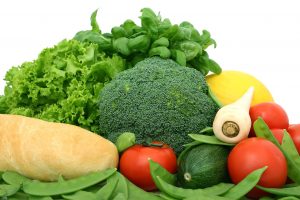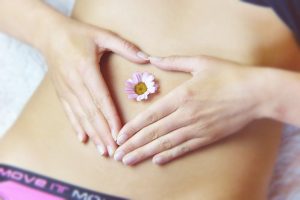Period Pain and Heavy Bleeding – Is it Endometriosis?
What is Endometriosis?

1 to 10% of all women, and up to 50% of infertile women, have endometriosis. Diagnosis is commonly delayed, many tend to have mild symptoms in the early stages and worsening menstrual pain is frequently normalized. Diagnosis is often delayed by 8 to 10 years. By this time the disease is usually deeply established.
Endometriosis is a chronic inflammatory disease characterized by the presence of endometrial-like tissue outside the uterus, mainly on pelvic structures and rarely at other body sites, such as the lungs. Under the influence of oestrogen, these cells proliferate and become encapsulated by immune defense mechanisms to form inflammatory cysts and lesions that can cause abdominal pain, scar tissue and adhesions. If endometrial tissue invades the uterine wall it is called adenomyosis
Oetrogen Dominance, Histamine & Inflammation
Historically, ‘oestrogen dominance’ has been implicated with endometriosis pathophysiology, stimulating the growth of endometrial tissue. However, current research reveals that excess oestrogen is only one part of a complex picture. An updated view of oestrogen’s role in endometriosis has found it to also increase histamine release. This results in increased circulation of histamine and subsequent inflammation.
Your Microbiome and gut health
Imbalances within the microbiome have also been identified as an inflammatory driver in endometriosis. Specifically, the role of gram negative bacteria and LPS has been associated with propagating chronic immune activation in inflammatory disease.
Signs and Symptoms of Endometriosis
Most common symptoms include:
- Heavy menstrual bleeding
- Pelvic pain with menses (not always related to severity of disorder)
- Extreme bloating
- Infertility
- Pain with bladder/bowel function
- Tenderness when affected areas are palpated
- Vaginismus
- Migraines and headaches
- Dizziness
- Constipation
- Joint pain
- Interstitial cystitis
Other common conditions & symptoms with Endometriosis
- Irritable Bowel Syndrome (IBS)
- Higher rates of allergic and autoimmune disorders
- Inflammatory bowel disease (IBD)
- Interstitial cystitis
- Depression -The pain and infertility of endometriosis is linked to depression as quality-of-life declines with the number and severity of symptoms.

Diet and Lifestyle Changes for Endometriosis
- Eat more brassica family foods – Ensuring optimal oestrogen detoxification through consumption of indole-3-carbinol containing foods (e.g., broccoli, cabbage, cauliflower, and other brassicas)
- Eat less high amine foods – These have been implicated in Endometriosis due to their additive effect on histamine load. Patients who present with migraines and headaches with endometriosis may experience relief from reducing, or eliminating dietary amines found in alcohol, pickled or canned foods, matured cheese, smoked meat products, shellfish, vinegar and ready made meals.
- Eliminate all known food allergens – The most common allergens are dairy, wheat, citrus, corn, soy, and fish. A gluten free diet has been shown to improve symptoms in 75% of endometriosis sufferer,
- Avoid exogenous oestrogens – Eat only organic poultry and produce and avoid plastic exposure.
- Increase intake of whole grains, fresh vegetables, essential fatty acids (cold-water fish, nuts, and seeds), and vegetable proteins. Include liberal amounts of liver-supporting foods such as beets, carrots, onions, garlic, dark leafy greens, artichokes, apples and lemons.
- Self-care – including nourishing activities, gentle exercise and laughing often.
- Reduce body weight if overweight and associated insulin resistance – A metabolic balance or ketogenic fat loss diet may help to improve insulin sensitivity, correct blood glucose levels, reduce adipose tissue. Fat reduction decreases the peripheral conversion of androgen to oestrone which contributes to endometrial hyperplasia.

Naturopathic Approach to Endometriosis
The first goal of your naturopath assessment is to assess your health holistically and find out what is happening in your body. Every case of endometriosis can mean a different treatment plan. Comprehensive testing is recommended including a Dutch Plus test to assess hormone detoxification pathways, iron, and vitamin D testing. These may be in addition to medical testing and investigations.

Primary treatment goals:
- Promote oestrogen metabolism and clearance
- Address symptoms (e.g. pelvic pain, heavy bleeding & clotting, painful periods)
- Improve progesterone sensitivity
- Address underlying drivers of endometriosis – assess gut health and microbiome and reduce inflammation
- Dietary strategies to reduce endometriosis symptoms, in order of importance – gluten and dairy free, reduce allergens, reduce histamines
- Other considerations – iron deficiency, vitamin D deficiency stress & mood imbalances, fertility support.
Are you ready for a fresh approach to your hormone health?
Whether you have suffered with heavy bleeding and period pain for years or you have an endometriosis diagnosis, a naturopath can help with your symptoms and improve your quality of life.
If you want to know more about how a naturopath can help with endometriosis contact Cindi today or speak to your Naturopath!

March is Endometriosis Awareness Month with events being held to raise awareness and funding for endometriosis research.
Cindi Young is a leading Gold Coast Naturopath with over 20 years experience helping people live happier, healthier lives with a special interest in hormone imbalances, gut health, fertility and weight loss programs.
Available by appointment at The Cycle of Life, Robina, Gold Coast and The Centre for Mind, Body, Wellness in Mullumbimby, NSW and telehealth appointments Australia wide.
